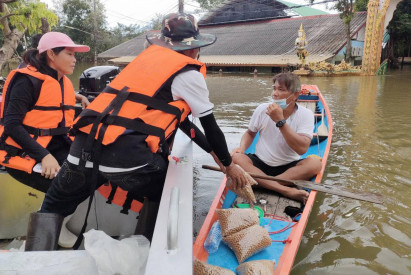New plans to divert to low-lying areas

The Royal Irrigation Department (RID) is speeding up efforts to drain floodwater to low-lying areas as the situation is gradually improving.
RID’s director-general Praphit Chanma said the department plans to install pumping machines in areas where the flooding has started to recede, such as Chai Nat and Sing Buri provinces.
“The RID has prepared pumping machines and mechanics to help the flooded areas recover according to the advice of the Natural Resources and Environment Ministry,” said Mr Praphit.
Meanwhile, the National Water Command Centre (NWCC) is drafting a rehabilitation plan for people affected by the floods.
Surasri Kidtimonton, secretary-general of the Office of National Water Resources (ONWR) and the acting deputy director of the NWCC, said the command centre is following the situation while planning to assist flood victims, many of whom have been struggling for over a month.
Inundated areas are expected to start drying up within the next week or so, according to the NWCC’s forecast, Mr Surasri said.
“The situation seems to be easing up due to the decreasing rain. The NWCC is still planning to drain more water from flooded areas while managing the water in those areas at the same time,” Mr Surasri said.
He said the NWCC has sent notices to six ministries — Interior, Defence, Agriculture, Natural Resources and Environment, Social Development and Human Security, and Public Health — to plan a recovery strategy after the floodwaters dry up, and asked them to help prepare information about the NWCC’s water management plan for farmers in affected areas.
The water situation in the Chao Phraya River Basin was reported to be improving as of yesterday morning.
According to a report, water was being discharged from the Chao Phraya Dam in Chai Nat at a rate of 2,221 cubic metres per second, while the water level had dropped 14 centimetres.
Water levels in the Chi and Mun river basins had been restored to safe levels, according to Mr Surasri.
However, 28 provinces, mostly in the Central and Isan regions, are still affected by heavy flooding.
Residents said they were struggling due to the poor quality of the floodwater, according to a source. Bad smells and leech infestations were listed among their chief concerns.
Locals affected by flooding can file complaints with their provincial irrigation department or call the 1460 hotline, Mr Praphit said.

